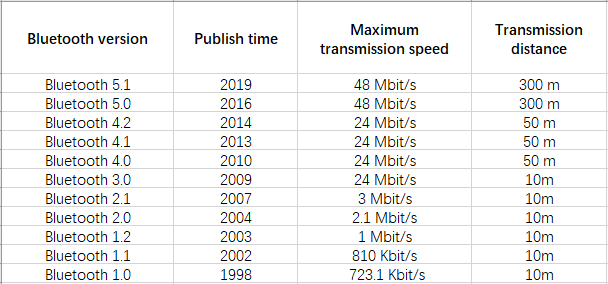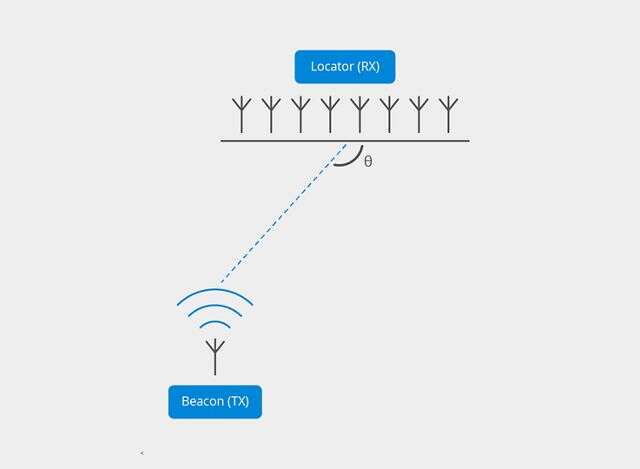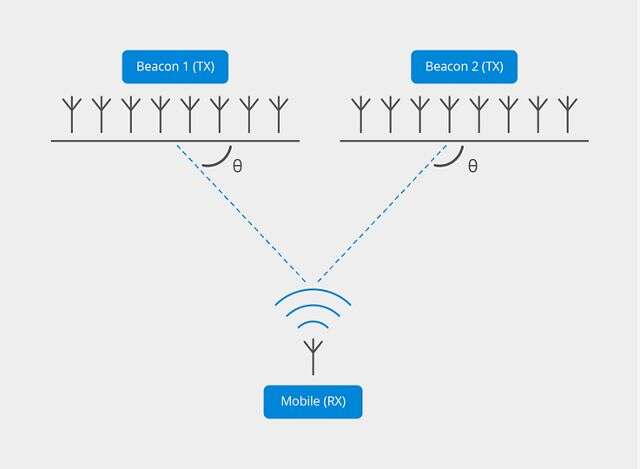The birth of Bluetooth Technology
Bluetooth actually dates back to World War II. The core of Bluetooth is short-range radio communication, which is based on frequency hopping spread spectrum (FHSS) technology. It was proposed by Hollywood actress HEDY LAMARR and pianist George Antheil in August 1942. Inspired by the number of keys on the piano, they control the torpedo by using 88 different carrier frequencies. Because the transmission frequency is constantly changing, it has certain confidentiality and anti-jamming capabilities.
At first, this technology did not attract the attention of the U.S. military, and it was not used in the battlefield wireless communication system until the 1980s. Frequency hopping spread spectrum (FHSS) technology later played a key role in solving the problem of wireless data transmission in Bluetooth, WiFi and 3G mobile communication systems.
Bluetooth technology began with Ericsson's scheme in 1994, which aims to study the method of low-power and low-cost wireless communication connection between mobile phone and other accessories. The inventors hope to create a set of unified rules (standardized protocol) for wireless communication between devices, so as to solve the communication problem of incompatible mobile electronic devices between users, and replace the RS-232 serial communication standard. Before 1997, Ericsson contacted mobile device manufacturers with this concept to discuss the cooperative development of their projects, and the results were supported.
In May 1998, the famous Bluetooth technology alliance between Intel and IBM special was set up, which is a low-cost joint venture between Nokia and Ericsson. At that time, Bluetooth launched 0.7 specification, which supports the communication protocol of baseband and and LMP (Link Manager Protocol).
In 1999, it launched 0.8, 0.9, 1.0 draft, 1.0A and 1.0b. 1.0 draft version, completed SDP (Service Discovery Protocol) protocol, TCS (telephone control specification) agreement. The version 1.0 was officially released on July 26, 1999. It was determined to use 2.4GHz spectrum and the maximum data transmission speed was 1Mbps. At the same time, large-scale publicity was started. Compared with the popular infrared technology at that time, Bluetooth has a higher transmission speed, and does not need to connect interfaces like infrared. All Bluetooth devices can be connected at any time as long as they are used within the effective communication range.

Specifications and functions of Bluetooth versions
First generation Bluetooth:early exploration of short distance communication
1999: Bluetooth 1.0
Early Bluetooth versions 1.0A and 1.0b had several problems, and several manufacturers pointed out that their products were incompatible with each other. At the same time, during the handshaking process of two devices, the Bluetooth hardware address (BD_ Addr) will be sent out, which can not be anonymous at the protocol level, resulting in the risk of data leakage. Some users are deterred.
2001: Bluetooth 1.1
Bluetooth version 1.1 is officially listed in IEEE 802.15.1 standard, which defines physical layer (PHY) and media access control (MAC) specifications, which are used for wireless connection between devices with a transmission rate of 0.7 Mbps. However, due to the early design, it is easy to be interfered by the same frequency products, which will affect the communication quality.
2003: Bluetooth 1.2
Bluetooth version 1.2 can be downward compatible with version 1.1. Aiming at the security problems exposed by version 1.0, the anonymous mode is improved and the hardware address of shielding device (BD) is added_ Addr) function to protect users from identity sniffing attacks and tracking. In addition, four new features have been added:
Second generation Bluetooth: EDR era of power transmission rate
2004: Bluetooth 2.0
Bluetooth 2.0 is an improved version of version 1.2. The new enhanced data rate (EDR) technology improves the ability of multi task processing and multiple Bluetooth devices running at the same time, making the transmission rate of Bluetooth devices up to 3mbps.
Bluetooth 2.0 supports duplex mode: it can transmit documents / high-quality pictures at the same time of voice communication. At the same time, EDR technology reduces the power consumption by reducing the duty cycle. Due to the increase of bandwidth, Bluetooth 2.0 increases the number of connected devices.
2007: Bluetooth 2.1
The new added sniff subrating power-saving function of Bluetooth 2.1 extends the sending time interval of mutual confirmation signals between devices from 0.1 second of the old version to about 0.5 seconds, thus greatly reducing the workload of Bluetooth chips.
In addition, the new SSP simple security pairing function improves the pairing experience of Bluetooth devices and its use and security strength. NFC near field communication is supported. As long as two Bluetooth devices with built-in NFC chips are close to each other, the pairing password will be transmitted through NFC without manual input.
Third generation Bluetooth: high speed, transmission rate up to 24mbps
2009: Bluetooth 3.0
Bluetooth 3.0 added the optional technology high speed, which can make Bluetooth call 802.11 WiFi to realize high-speed data transmission. The transmission rate is as high as 24mbps, which is 8 times higher than that of Bluetooth 2.0. It can easily realize the data transmission from VCR to HDTV, PC to PMP, UMPC to printer.
The core of Bluetooth 3.0 is AMP (generic alternate MAC / PHY), which is a new alternative RF technology, which allows Bluetooth protocol stack to dynamically select the right RF for any task.
In terms of power consumption, Bluetooth 3.0 introduces EPC enhanced power control technology, supplemented by 802.11, which significantly reduces the actual idle power consumption.
In addition, the new specification also adds UCD unidirectional broadcast connectionless data technology to improve the corresponding capabilities of Bluetooth devices.
Fourth generation Bluetooth: low energy
2010: Bluetooth 4.0
On July 7, 2010, Bluetooth Technology Alliance launched Bluetooth 4.0 specification. Its most important feature is to support power saving. Bluetooth 4.0 is the first Bluetooth integrated protocol specification so far, which integrates the three specifications. Three modes of low-power Bluetooth, traditional Bluetooth and high-speed Bluetooth are also proposed.
High speed Bluetooth mainly focuses on data exchange and transmission; traditional Bluetooth focuses on information communication and device connection; Low Power Bluetooth focuses on device connection without taking up too much bandwidth, and its power consumption is reduced by 90% compared with the old version.
The predecessor of ble is the wibree technology developed by Nokia. As a very low-power mobile wireless communication technology specially developed for mobile devices, ble was renamed Bluetooth low energy (hereinafter referred to as low-power Bluetooth) after being accepted and standardized by sig. These three protocol specifications can also be combined with each other to achieve a wider application mode.
Bluetooth 4.0 chip mode is divided into single mode and dual mode. Single mode can only transmit with Bluetooth 4.0, but not downward compatible with 3.0 / 2.1 / 2.0; dual mode can be downward compatible with version 3.0 / 2.1 / 2.0. The former is applied to sensor devices using button batteries, such as heart rate detectors and thermometers, which require high power consumption; the latter is applied to traditional Bluetooth devices, taking into account the demand of low power consumption.
In addition, Bluetooth 4.0 also increases the transmission distance of Bluetooth to more than 100 meters (under low power consumption mode). With faster response speed, the connection can be set up and data transmission can be started in 3 ms at least. More secure technology, using AES-128 CCM encryption algorithm for packet encryption and authentication.
2013: Bluetooth 4.1
Bluetooth 4.1 has little change in transmission speed and transmission range, but it has obvious improvement in software. The purpose of this update is to make Bluetooth smart technology the core driving force for the development of Internet of things.
Support seamless collaboration with LTE. When simultaneous interpreting data with Bluetooth and LTE radio signals, Bluetooth 4.1 can automatically coordinate the transmission information between them to ensure cooperative transmission and reduce mutual interference.
It allows developers and manufacturers to customize the reconnection interval of Bluetooth 4.1 devices, providing developers with more flexibility and control.
Support cloud synchronization. Bluetooth 4.1 introduces a dedicated IPv6 channel, which means that the data in the cloud can be synchronized through IPv6 to meet the application requirements of the Internet of things, such a process was realized by the connection with the devices that can be connected to the Internet (such as mobile phones).
Support the role exchange between extended devices and central devices. Bluetooth 4.1 standard headset, watch, keyboard and mouse can be used to send and receive data independently without PC, tablet, mobile phone and other data hubs. For example, smart watches and pedometers can bypass smart phones and directly communicate.
2014: Bluetooth 4.2
The transmission speed of Bluetooth 4.2 is faster, which is 2.5 times higher than that of the previous generation, because the capacity of Bluetooth smart packet is increased, and the amount of data it can hold is about 10 times that of the previous generation.
It improves the transmission rate and privacy protection. If Bluetooth signal wants to connect or track the user's device, it must be approved by the user. Users can use wearable devices without fear of being tracked.
It supports 6LoWPAN, which is a low-speed wireless personal area network standard based on IPv6. Bluetooth 4.2 devices can access the Internet directly through IPv6 and 6LoWPAN. This technology allows multiple Bluetooth devices to connect to the Internet or LAN through one terminal. In this way, most smart home products can abandon the relatively complex WiFi connection and switch to Bluetooth transmission, which makes the interconnection between personal sensors and home more convenient and fast.
The fifth generation Bluetooth: opening the door of the Internet of things Era
2016: Bluetooth 5.0
Bluetooth 5.0 has faster and longer transmission capacity in low power consumption mode. The transmission rate is twice that of Bluetooth 4.2 (the upper limit of speed is 2Mbps), the effective transmission distance is four times that of Bluetooth 4.2 (up to 300 meters in theory), and the packet capacity is eight times that of Bluetooth 4.2.
Support indoor positioning navigation function, combined with WiFi can achieve indoor positioning accuracy less than 1 meter.
For IOT(The Internet of things) bottom optimization, strive to lower power consumption and higher performance for smart home services.
Mesh mesh network: the key to realize the Internet of things
Mesh mesh network is an independent research and development network technology. It can use Bluetooth equipment as a signal relay station to cover data in a very large physical area. It is compatible with Bluetooth 4 and 5 Series protocols.
The traditional Bluetooth connection is realized by "pairing" one device to another to establish a "one-to-one" or "one to many" micro network relationship. The mesh network enables devices to achieve a "many to many" relationship. In mesh network, each device node can send and receive information. As long as a device is connected to a gateway, the information can be relayed between nodes, so that the message can be transmitted to a location farther than the normal transmission distance of radio waves.
In this way, mesh network can be distributed in manufacturing plants, office buildings, shopping centers, business parks and more extensive scenes, providing more stable control scheme for lighting equipment, industrial automation equipment, security cameras, smoke detectors and environmental sensors.
2019: Bluetooth 5.1
Bluetooth 5.1 technology specification uses direction finding function to detect the direction of Bluetooth signal, and then improves location service. With the help of Bluetooth direction finding function, developers can bring products that can detect the direction of equipment and achieve centimeter level positioning accuracy to the market. Bluetooth local services uses RSSI to measure the distance between two devices. In RTLS and IPS scenarios, the centimeter level positioning can be achieved by using three times of ranging and direction finding technology. The direction finding technology relies on two antenna array technologies to determine the signal of Bloom: angle of arrival (AOA) and angle of Department (AOD), as shown in the following figure:
1. AOA technology of direction finding

When the transmission signal passes through the antenna array of the receiver, the antenna array of the receiver receives the transmission signal from different angles and directions. Each direction can be regarded as the vector phase of the transmission signal. The receiver can extract the IQ sample of the active antenna in the antenna array, and the receiver can calculate the direction of the signal according to the IQ sample. AOA direction finding can be applied after RTLS, item finding, pol and other local services.
2. AOD technology of direction finding

AOD direction finding is generally used in IPS scenarios for route finding and navigation. The locator locator uses antenna array. The receiver can be a general mobile phone (of course, there should be corresponding APP), and only one antenna is needed. When signals are sent from multiple signals of the locator, these signals will pass through the antenna of the mobile phone, and the mobile phone will extract IQ samples, and the signal direction can be calculated according to the IQ samples.
 online service
online service 0086-591-8806 9579
0086-591-8806 9579 88067049
88067049 izzy@lexinda.com
izzy@lexinda.com sarahlpr
sarahlpr 86-15336506363
86-15336506363